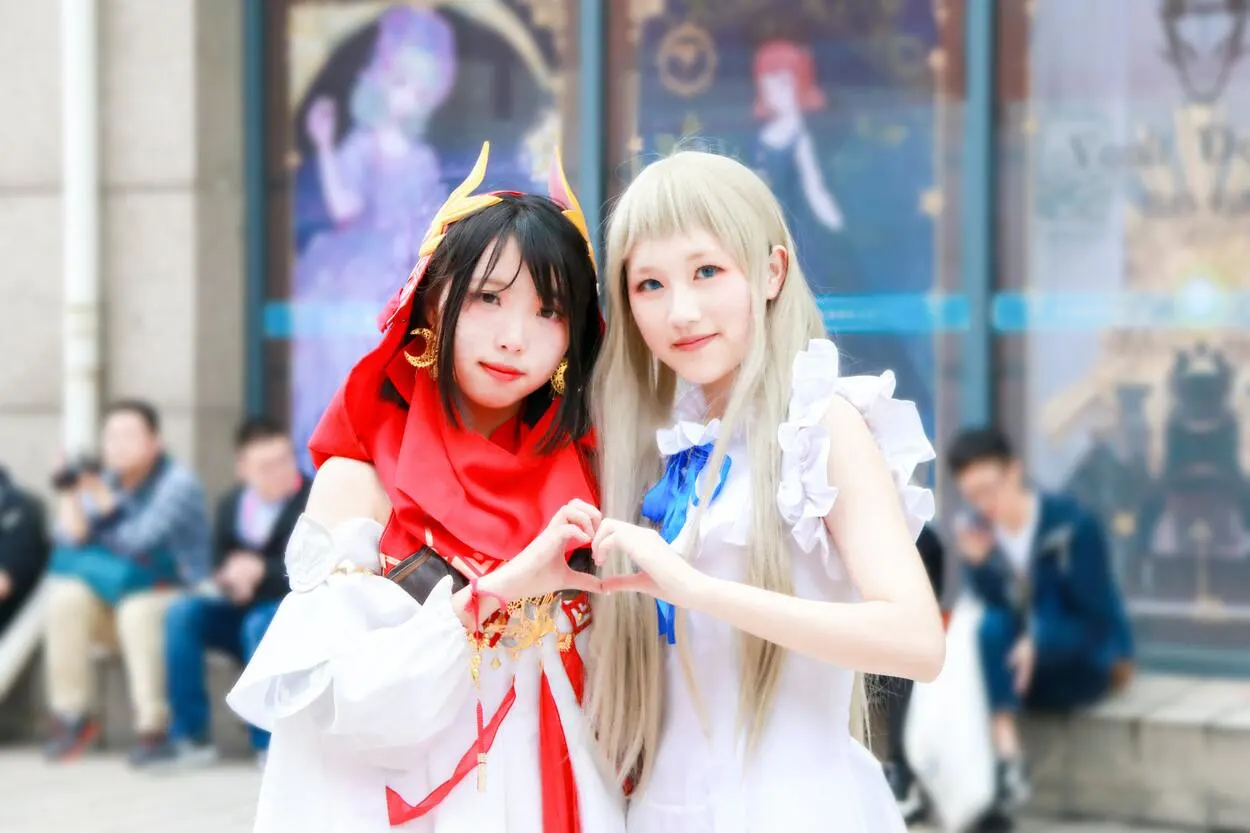According to current trends, cosplaying is neither particularly new nor particularly old.
Cosplay‘s recent and rapid growth, particularly in the western and southeastern regions of the world, is one thing that is not new.
It’s no longer acceptable to reject this hobby, or for some, a way of life, as merely “child-play” because cosplayers themselves have grown into such a large community. Gone are the days when cosplayers were condemned and treated with contempt.
| Who Originated The Term Cosplay | Nobuyuki Takahashi |
| How Big Is The Cosplay Industry | $4.6 billion |
What is cosplay, and how does it work?
The act of dressing up like a character or concept is known as cosplay. Cosplayers may go beyond simply replicating their character’s clothing; they may even ‘role-play’ as characters, mimicking their mannerisms and motions.
One of the goals of cosplay is to act out a character. You can achieve this ‘accurately’ by meticulously replicating a character’s appearance. You can also add your own artistic flair! Cosplayers create their looks by combining costumes, wigs, accessories, and props.
People of all genders, orientations, and expressions are welcome to partake in cosplay. Cosplayers will even ‘cross-dress’ or ‘gender-swap,’ where they dress up as a character of the opposite sex.
Is cosplay beneficial to one’s mental health?
One of the most significant advantages of cosplay is that it can help an individual build more self-confidence and a sense of camaraderie.
When a person decides to cosplay, they will most likely attend an event where they will be surrounded by other cosplayers or others who share common interests.
Another advantage of cosplay is that it can help people cope with their personal problems by allowing them to dress up as specific characters.
Cosplay is a fun hobby that may be used for self-care and provides various mental health advantages, such as boosting self-confidence, generating a feeling of community, and assisting individuals in overcoming personal challenges.
What kind of people are into Cosplay?

Although anyone can cosplay and there are cosplayers of various sexes, ages, races, and financial means but usually people who are into Anime, Mangas, and cartoon cosplay.
At numerous comic and fan conventions across the world, hundreds of thousands of attendees congregate, many of whom dress up in cosplay.
Cosplay, which is derived from the phrase “costume play,” entails dressing up as and frequently taking on the persona of a character, typically from a work of fiction.
Cosplay is a kind of performing art.
Even though cosplayers frequently assemble at conventions like Comic Con, cosplay may also be done comfortably and somewhat safely at home, especially since the pandemic’s beginning.
What is the concept of Cosplay?
The famed Nobuyuki Takahashi of Manga Studio “Hard” didn’t use the term “cosplaying” until 1984.
When he went to the 1984 World Science Fiction Convention in Los Angeles, he came up with this expression after being particularly struck by one attendee’s clothing.
While reporting it to “my Anime” after the conference, he used the phrase kosupure, which is Japanese for “cosplay,” to characterize the elaborate masquerades worn by convention goers.
That’s it, indeed. Many kids today spend all of their free time, energy, and limited finances making a costume that speaks to them because of this.
The term “cosplaying” was first used in the late 1980s, but the practice itself dates back to carnivals in the early 15th century when people commonly dressed as legendary characters or even inanimate objects.
If we go back even further, we may claim that the origins of cosplay and specific role-playing can be traced to the Ancient Greeks, when entertainers would wear different personas and costumes to amuse the upper classes of society.
Is Cosplay a coping mechanism?
Many people from all areas of life utilize cosplay as a form of coping mechanism—a method to feel comfortable in their own skin—especially for those who struggle with mental health issues like social anxiety, low self-esteem, and introversion.
Cosplay can help reduce fear and anxiety, allowing persons with certain mental conditions who find it difficult to socialize with others or a small number of close friends to have a good time.
Cosplayers are free to dress up as someone or something else for a few hours who is more in line with who they wish to be.
When a cosplayer chooses a particular outfit, they frequently draw inspiration from a particular character — or cast of characters — because something about that persona resonates with them.
Cosplayers claim that because they are assuming a persona that is different from their own while cosplaying, they feel more confident and have a greater sense of self in their everyday lives.
Frequently, it is someone who is more strong, more well-liked, or has any other quality that the cosplayer admires and wants to temporarily embrace.
Cosplaying may be a method to decompress from the stresses of daily life or an occasionally difficult project to take on.
What is the golden rule of Cosplay?

The “Golden Rule” of cosplay is often referred to as the rule of respect, which means treating other cosplayers and members of the cosplay community with kindness and respect, regardless of their level of skill or experience.
This includes respecting the boundaries of other cosplayers, not touching their costumes or props without their permission, and not taking photos without their consent.
There are some common processes that you need to follow when it comes to cosplay, especially in broad daylight, even if this is a fantastic alternative to escaping the many troubles of our current world:
Know About Yourself
Depending on the type of scene you plan to participate in, it might not be a good idea to wear any costume that has dubious themes or that might be unfriendly or unsettling to young children.
Any characters you decide to cosplay as who wear covers or something veiling (like Tokyo Ghoul) definitely aren’t appropriate for venues like shopping malls, banks, or similar establishments.
Don’t Be A Complainer
Although we have heard many stories about these happenings online, we are unsure of how much attention should be paid to this.
If you plan to RP (Role-Play) while dressed as a character, avoid bringing complete outsiders who have no idea what is going on or what you are doing.
Don’t add fuel to the fire by doing something that you and the rest of the Anime network may later regret. It’s bad enough that some people think cosplayers are strange.
Stand Your Ground
You should keep in mind that you’re representing yourself as an Anime fan when you wear an Anime costume in public.
You are responsible for communicating your status as a fan or the preferred name of the network.
Your reputation as a fan (or the notion and concept of cosplaying in public) will decline faster than a house of cards if you do or say anything that your mother, grandmother, former kindergarten teacher, friends, or preacher could find offensive while you are dressed up.
A man once said, “With tremendous power comes incredible responsibility!”
Not everyone is comfortable with cosplaying in public outside of conventions, but for the percentage of fans that are, just keep in mind these wise guidelines before leaving the house in your cosplay.
Conclusion
- Cosplay’s recent and rapid growth, particularly in the western and southeastern regions of the world, is one thing that is not new. Gone are the days when cosplayers were condemned and treated with contempt.
- The phrase “cosplaying” wasn’t coined until 1984 by the renowned Nobuyuki Takahashi of Manga Studio “Hard.”
- Many people from all areas of life utilize cosplay as a form of coping mechanism—a method to feel comfortable in their skin—especially for those who struggle with mental health issues like social anxiety, low self-esteem, and introversion.
- There are some common processes that you need to follow when it comes to cosplay, especially in broad daylight, even if this is a fantastic alternative to escaping the many troubles of our current world.
Other Articles
- What Is Cosplay: Exploring Japan’s Subculture
- What Can You Learn From Cosplay? (Knowledge)
- The Concept Behind Cosplay: Where Did It Start?
Click here to view the visual Story version of this article.
